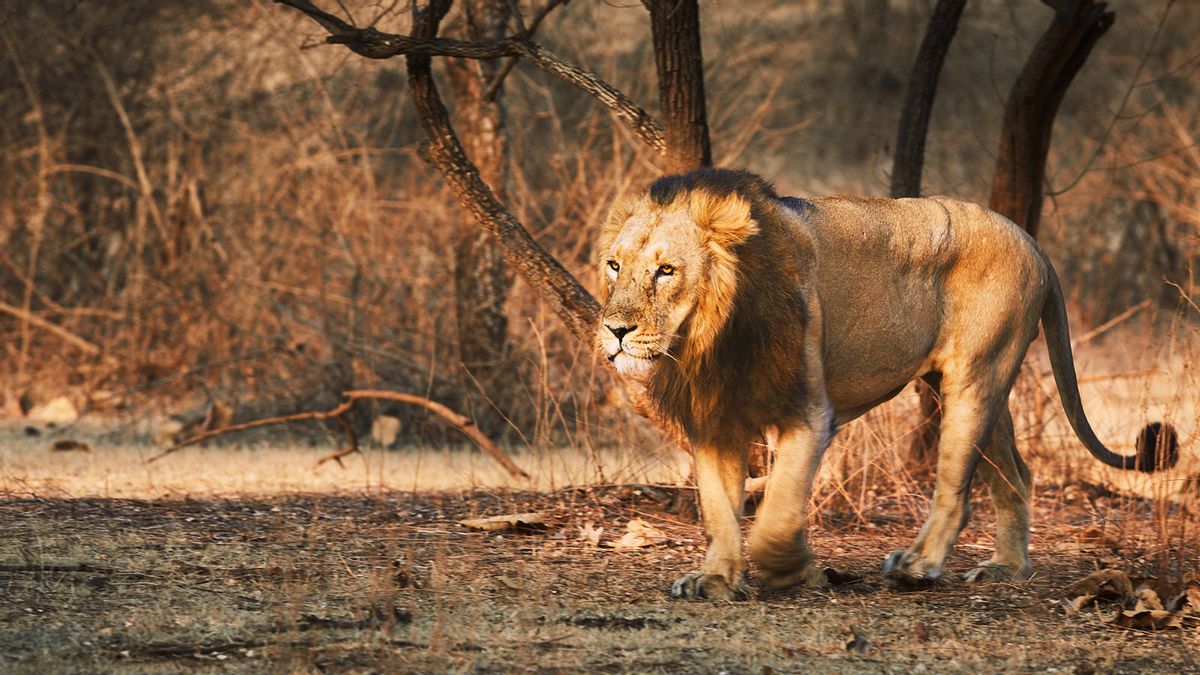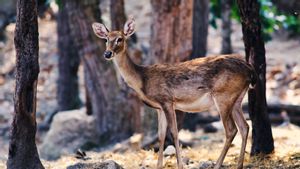At the onset of the last winter, when lockdown woes were on an ebb, I set out on a three-day exploration of the Gir National Park. We were shooting a documentary film on Gir and its famous inhabitants - the Asiatic lions.
Getting to Gir
Reaching Gir from Mumbai is easy. Board a less-than-an-hour flight to Rajkot and a three-and-a-half-hour drive will bring you to Sasan Gir, the district where the national park is located. Take the National Highway 8B till Gondal and Jetpur, further to Junagadh by MH 151. Junagadh (known for its Kesar mangoes) to Sasan Gir is a scenic drive of about 50 kilometres.
Gir National Park and Wildlife Sanctuary is a deciduous scrub forest and dry Savannah covering a total area of 1,412 square km of which 258 square km is protected and maintained as a national park. There are three safari slots during the day, two in the morning and one in the afternoon. Online booking facility is advised. During the monsoons, the period between June 16 and October 15, the park remains closed.
Looking for the mugger
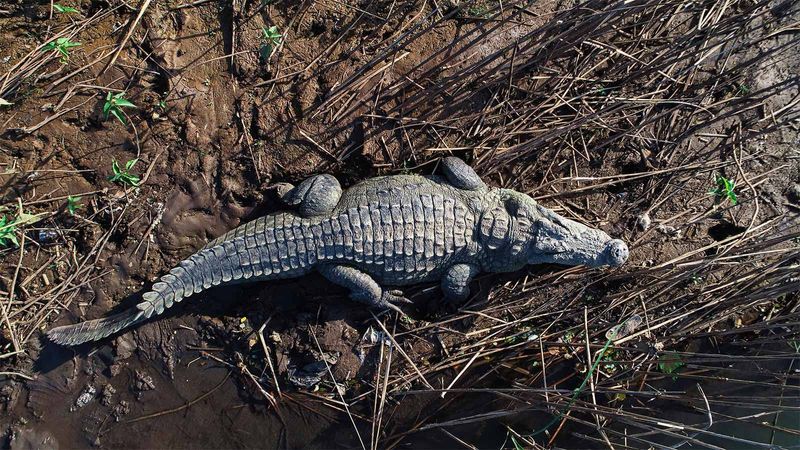
The afternoon we reached; our guide suggested we drop by at a nearby resort on the banks of the Hiran river to check out the sunbathing mugger crocodiles. There were five large ones hanging out in the marsh, we found them lying still until an unfamiliar sound in the distance provoked a hurried movement and dive into the river. Apart from being seen around the Hiran river, muggers also known as marsh crocodiles, are freshwater crocodiles that can be spotted within the national park area and around the Kamleshwar Dam. The day went well but the real treat, lion sighting was slated for day two.
In search of the Lion King

The next morning equipped with suntan and caps, we took the second safari of the day hoping to spot the lion. Our escort, Ketan Masroo, a seasoned guide working in the Gir, built up our hopes of a sighting and we could hardly keep our excitement at bay. We set out on route 2. All safari vehicles follow fixed routes inside the park. We got lucky within the first hour. Near a water body, under a thick tree, the mother lioness aged nine was resting along with her two ten-month-old cubs. The mother and son had just finished their breakfast, a Nilgai they had hunted the night before. The daughter was still at it trying to polish off the remaining meat on the carcass.
Sightings galore
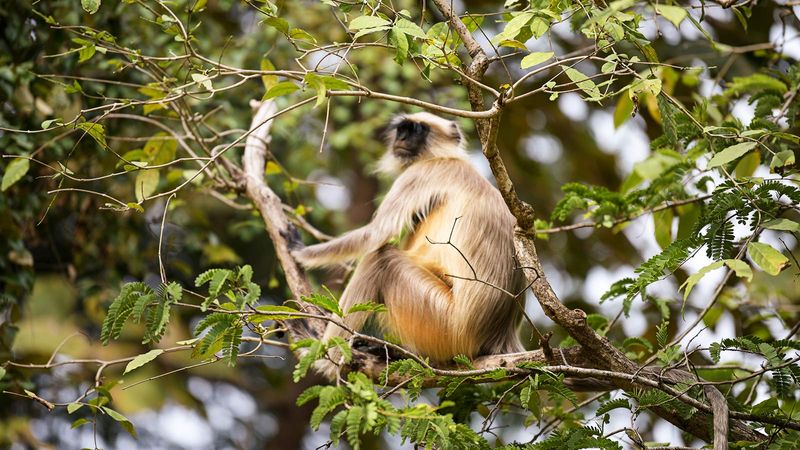
We learnt a small trivia that lions, unlike tigers, do acquire names in the forests. In a few hours, we spotted another pride of four lionesses and sub-adults in a thick bush. We were informed that this spotting was a lucky one because the place where this pride had wandered to was an aberration as a group normally hangs around in self- marked areas known to experienced rangers.
The magnificent Asiatic Lion shares its ancestry with its African cousins from more than 50,000 years ago. However, they have evolved a different body type. The Asiatic Lions are shorter and lighter, and the males sport less prominent manes. They are also rarer, less than 700 when compared to the 20,000 plus the African variety.
Lessons in history

History records show the last surviving lions outside Gir were shot at Dessa in 1870. It was only in 1901 when Lord Curzon declined the invitation for the shooting of lions and requested the Nawab of Junagadh to protect the remaining handful of lions, that the conservations efforts began. The first census in the Gir forest took place in 1936 by the Chief Forest Officer of Junagadh by counting lions at the watering holes and applying the pugmark technique. From 287 in 1936 the numbers saw a sharp decline to 177 in 1963.
Gir was declared a sanctuary in 1965 and a smaller part was carved out as a National Park in 1975. Since then, there has been a steady increase in the number of lions, particularly so since the 2005 census. In June 2020, the 15th lion census declared the numbers at 674, a steady increase of 29% over the last census in 2015, with a healthy mix of males, females, sub-adults and cubs.
Spotting the leopard
There is another predatory animal- the leopard native to Gir. Leopard spotting is tough, and as expected we couldn’t spot one inside the park in our first safari. But, we spotted enough Chitals and Chinkaras. The hooved prey animals like the deer and the antelopes play an important role in the food chain of the jungle. Gir has a variety of deer like the chital and the sambar and antelopes like the Chinkara, the four-horned antelope, blackbuck and the Nilgai. Another prey animal, the Hanuman Langur, is common in Gir and constitutes 25 per cent of total prey for leopards in the Gir forest.
The Maldharis
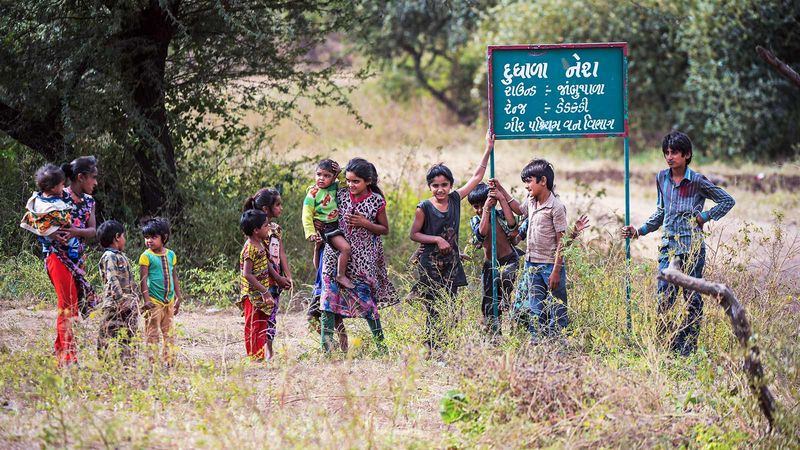
During our safaris, we spotted a hamlet called Dudhara, inhabited by the Maldharis. Living in peaceful co-existence with the lions for over a century, the tribe, refused to relocate when made an offer during the formation of the sanctuary. Owners of livestock, the courageous pastoral community is known for the eclectic attire of their men and women. They posed for our cameras from a distance as we weren’t allowed to alight the safari vehicle.
The leopard chase continues

We set out for yet another safari in the evening at Devalia, a smaller park in the area where spotting is somewhat easier. The Gir interpretation zone was developed at Devalia to reduce human interference in the main area of the Gir National Park and to facilitate tourists to better understand the importance of Gir and its varied wildlife. Open for tourists through the year, Devalia comprises 412 hectares of area that represents Gir, including all habitat types, and major wildlife present in the main sanctuary. In case you have less time at Gir, and you still want to spot lions and the leopards, head straight to Devalia. We finally spotted two leopards, one sitting atop a tree, climbing down to join his mate in the grassland. We were fulfilled.
From the Asiatic lions to the lion-hearted Maldharis, the Gir ecosystem teaches us a beautiful lesson on how humans and predatory animals can live in harmony, even in the wild.
Dos and don’ts at Gir National Park
|
The best time to visit Gir National Park is during Mid October - Mid June, and the best recommended time is December - April.
COVID-19 rules for travellers in Gujarat
- You need to download the Aarogya Setu app
- You need to carry a negative RT-PCR report not earlier than 72 hours from an ICMR approved laboratory.
Mitrajit Bhattacharya is an avid traveller and the founder of The Corner Room Project.


